| Columns Retired Columns & Blogs |
Sennheiser HD 660 S Over-Ear Open Headphones
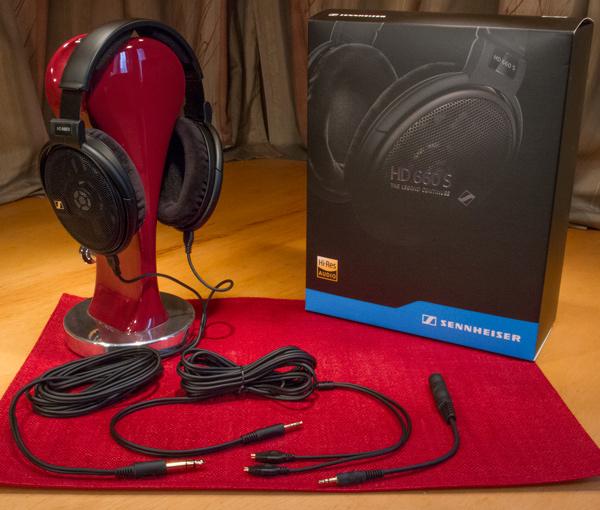
This story originally appeared at InnerFidelity.com
I'll not wax poetic this time regarding the long and storied history and my experiences with the HD 6xx family of Sennheiser headphones. For that, simply go have a look at my "The Very Important Sennheiser HD 580, HD 600, and HD 650" review.
For now it's sufficient to state that the Sennheiser HD 600 and HD 650 are probably the most highly regarded enthusiast headphone in the world, and I highly recommend both. The HD 650 is a bit too warm sounding for me (just a bit), and the HD 600 is my favorite of the two.
The only problems with them is that the clamping force on the head is a little too strong, and they can sound a little "veiled" or distant in the lower presence region around 800Hz to 1500Hz—the HD 650 a bit more so than the HD600. Some will say the HD 650 has more mid-bass bloom, which it does, but it amounts to the same thing relatively speaking.
The clamping pressure can be modified fairly easily: extend the earpads all the way; grip the headband with both hands close to the center of the headband; then rotate your hands putting pressur near the center of the headband so as to stretch them out. The headband is a very high quality plastic and will not break; just be firm and not over-zealous feeling the plastic deform slightly as you do it and repeat until the pressure is right. I've heard others suggest to bend the metal headband extensions; I don't like this idea as the shape of the metal extensions are set to slide into pockets in the headband and I think it's best to let them retain their proper shape.
Numerous modifications have been developed by enthusiasts over the years. I have to review headphones in their stock form so I have only a little personal experience with these modified cans. If you'd like to learn more, I suggest starting your journey with this SBAF thread pointing to wide variety of HD 6xx information resources, and this post indexing a number of the modification threads.
And with that, we'll dive right into the HD 660 S
Sennheiser HD 660 S ($499.95)
The HD 660 S visually has very close family ties to its older siblings and, to me, it's the best looking variant yet. Liveried in simple matte black plastic with new grills that include a raised area with the Sennheiser logo it strengthens my personal conviction that audio gear should be black. Silly, I know, but I think a stealth black look helps put the focus on where it belongs: sound quality, not looks.
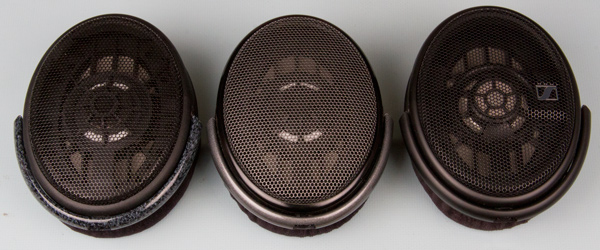
In this, and the following series of photos, the HD 600 is at left, the HD 650 at center, and the HD 660S is to the right.
The HD 660 S still has the somewhat tight clamping force, which can be remedied as mentioned above. Once set, the HD 660 S has the same quite comfortable, head-hugging fit and light weight of its predecessors. There are a few subtle differences.
Though the presentation case remains the same, the HD 660 S comes with two cables, both about ten feet long, one terminated in a 1/4" TRS plug, the other terminated in the new 4.4mm Pentaconn TRRRS balanced connector. Also included is a 1/4" jack to 3.5mm plug short cable adapter.
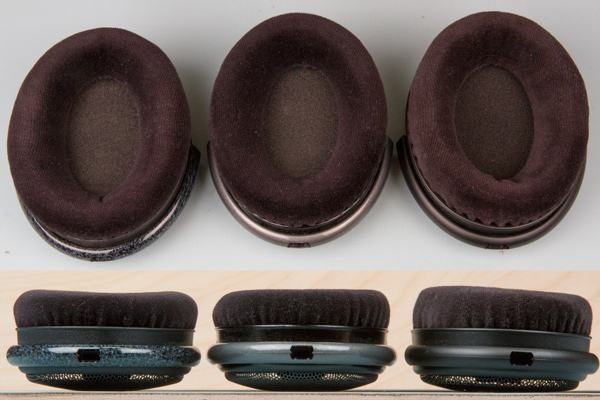
There has been a slight change to the earpad. From what I can gather the earpads are slightly thicker and have a slightly beveled inside circumference. In this Head-Fi post a Sennheiser representative said is was done to make them feel a little more "roomy and pleasant." I went back and forth between my HD 650 and the HD 660 S and felt indeed there might be a small improvement in comfort, but it is subtle.
Let's take a look inside:
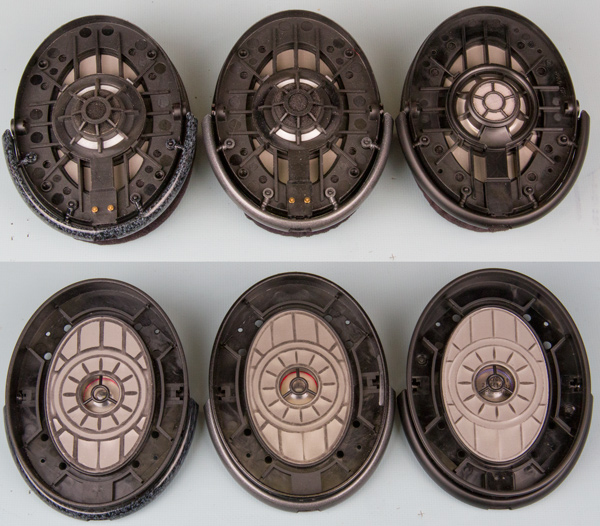
As you can see there are a lot of similarities between the ear capsules of these headphones, if fact they are identical in a number of ways. Earpads, grills, and cables are interchangeable. The one big different is the driver assembly, which is completely different and not interchangeable. The diameter of the HD 600/650 driver housing is 1.722", the HD 660 S is 1.737" in diameter.
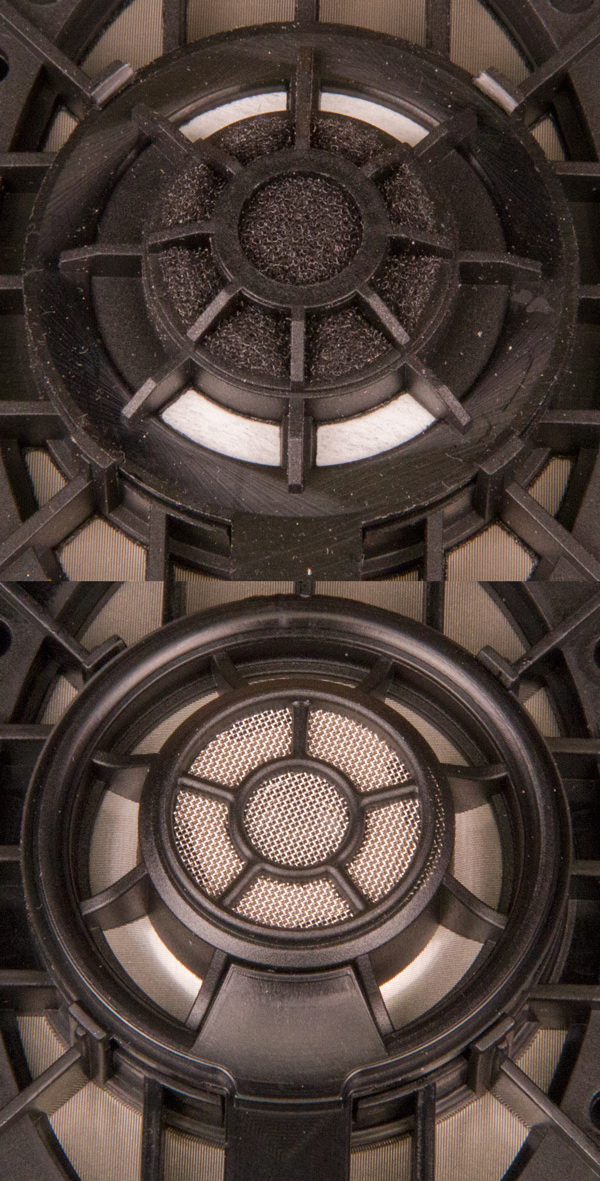
Close-up of the rear of the HD 650 driver (top) and the HD 660 S driver (bottom).
Obviously, these are quite different drivers. Rumors run rampant that this is an HD 700 driver. I wasn't able to find a definitive comment from Sennheiser, but in this post Jude claims it is a derivation:
The driver is based on the Sennheiser HD 700's driver, but it does not sound like an HD700 -- it sounds like an HD600-series headphone, through and through.
He's fairly privy to inside information, and a good hard look at the two make it fairly obvious they're related.
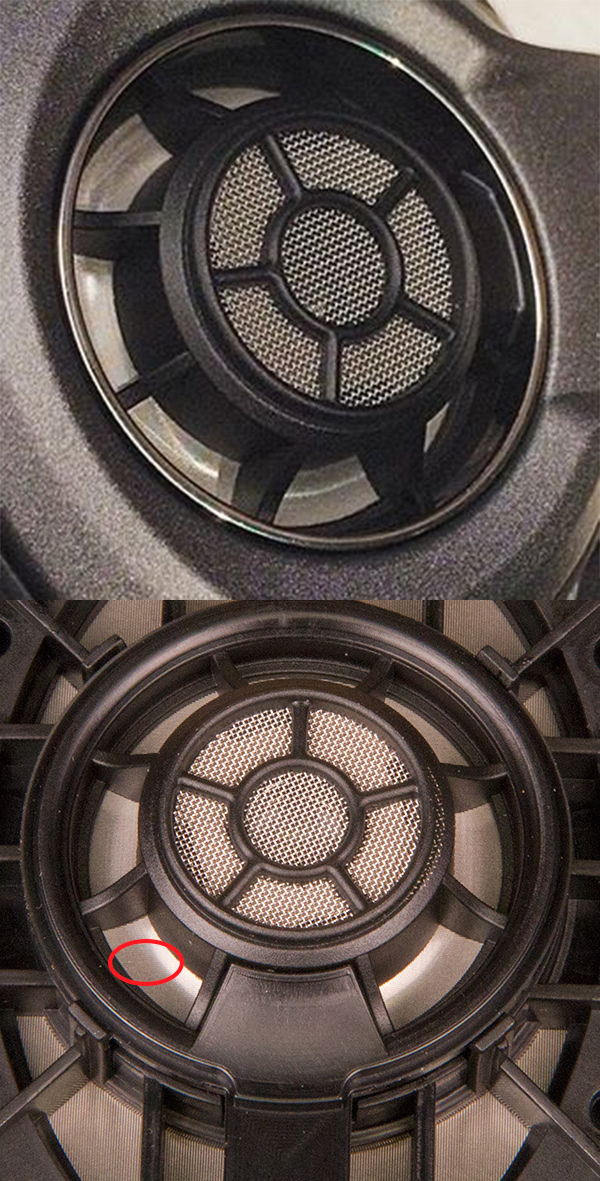
Rear of HD 700 driver (top) and the HD 660 S driver (bottom).
I don't have an HD 700 here to take physical measurements, but the resemblance is undeniable. The most distinguishing feature to my eyes is the very fine stainless steel mesh behind the outside edge of the driver formed to mimic the shape and ventilate that area evenly. Here's what the Sennheiser HD 660 S product page says:
The HD 660 S features a new transducer design developed by Sennheiser. This results in improved control of the diaphragm movements thanks to a specially manufactured precision stainless steel fabric, which is adapted to the contour of the diaphragm. Extremely light aluminum voice coils ensure the highest impulse fidelity.
Hm. Well they sort of state that it's a new design, but I'm betting that's a bit of poetic license—the HD 700 is a relatively new design. Thing is, impedance and phase measurements are almost identical.
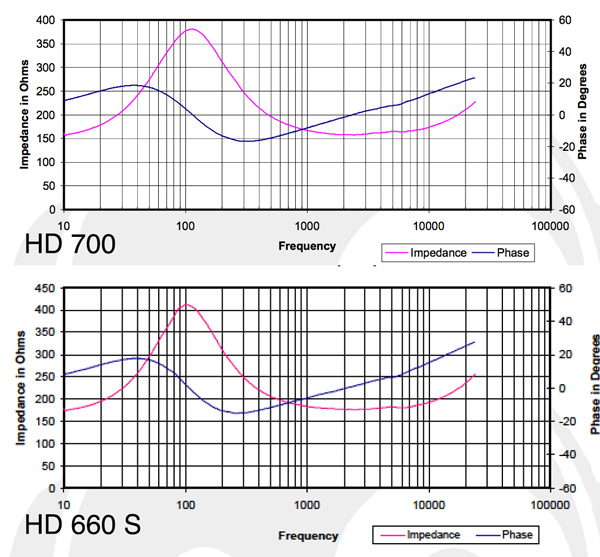
Man, it doesn't get much closer than that. By my reckoning, it seems very likely that the HD 660 S is using the HD 700 driver design with a redesigned outer housing to fit into slightly changed HD 6xx baffle plate.
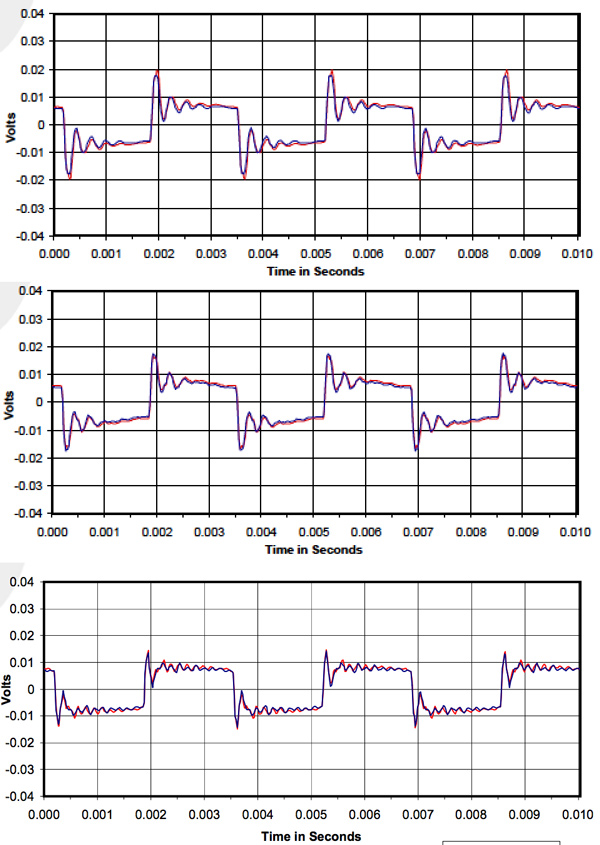
300Hz square wave response of the HD 600 (top), HD 660 S (middle), and HD 700 (bottom).
The thing to me that's very interesting is that, assuming it is an HD 700 driver, how little the driver performance itself effects the performance of the headphone as a whole. In the 300Hz square wave responses above you can clearly see the HD 660 S response (middle) is very much like the the HD 600 response (top) and is quite unlike the HD 700 response (bottom)...and that's a very good thing. I found the HD 700 a very bright headphone with an uncontrolled treble. Just goes to show you how much the overall acoustic of a headphone is largely due to the acoustics of the ear cup and has less to do with the driver itself.
Alrightythen, let's have a listen.
- Log in or register to post comments




































